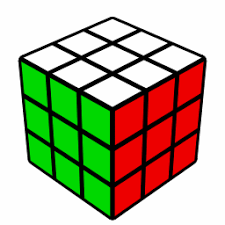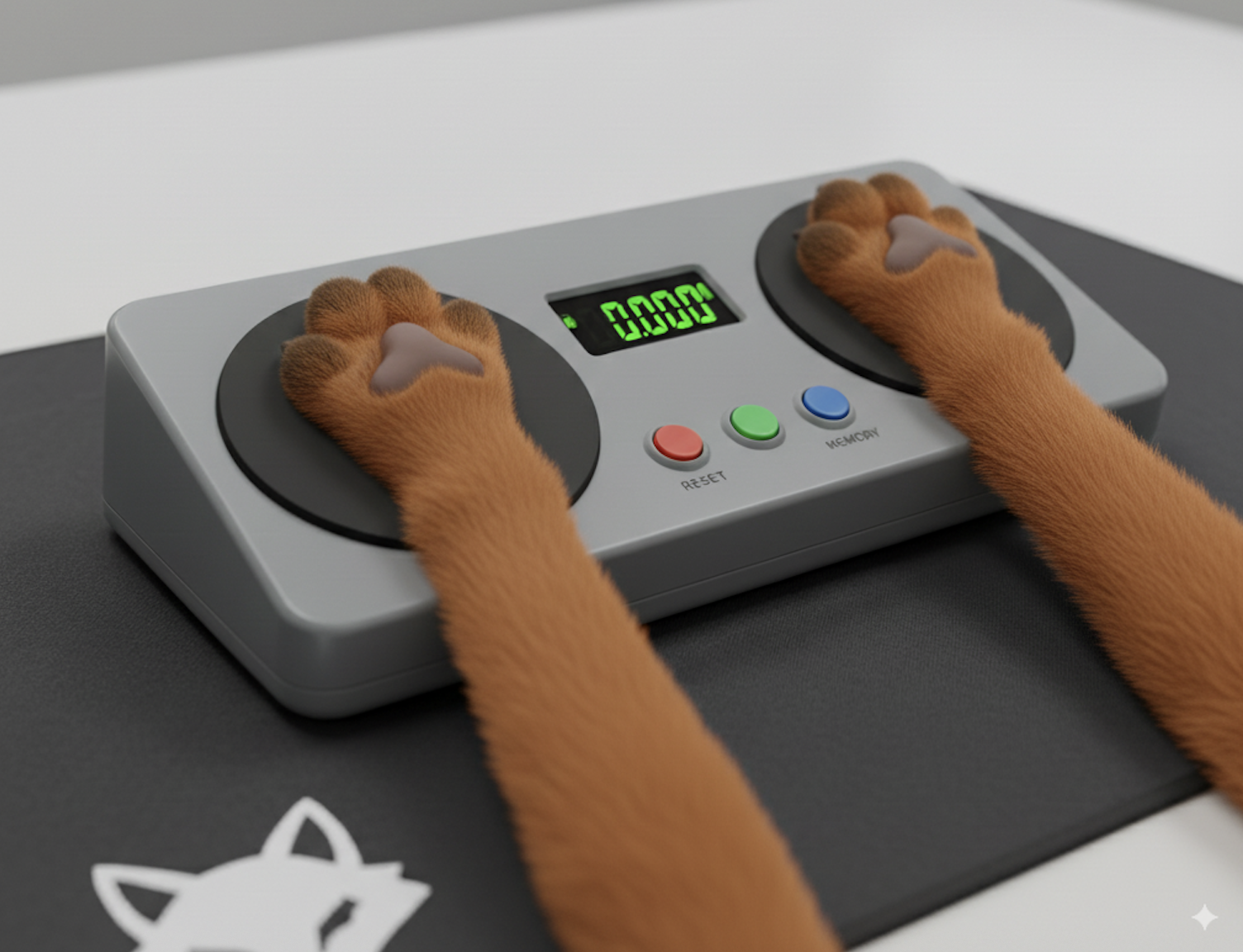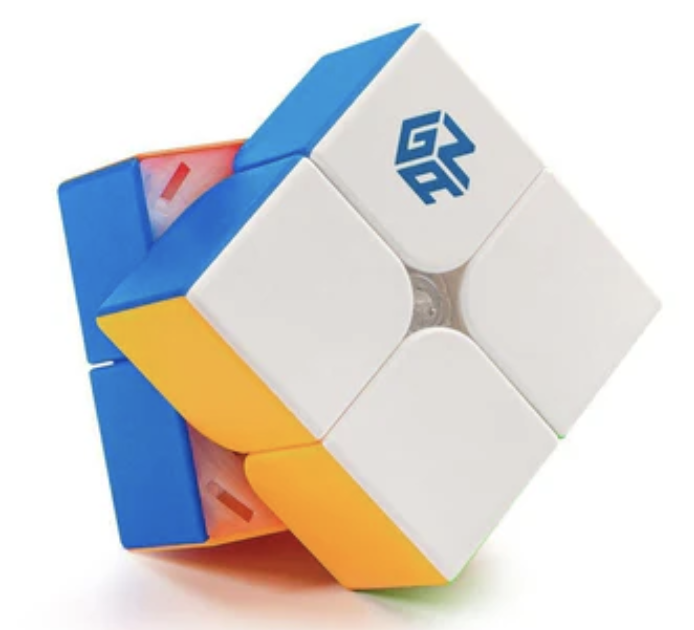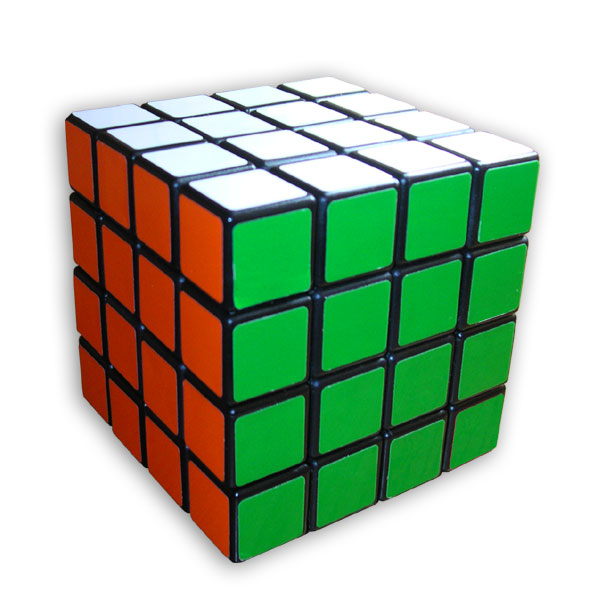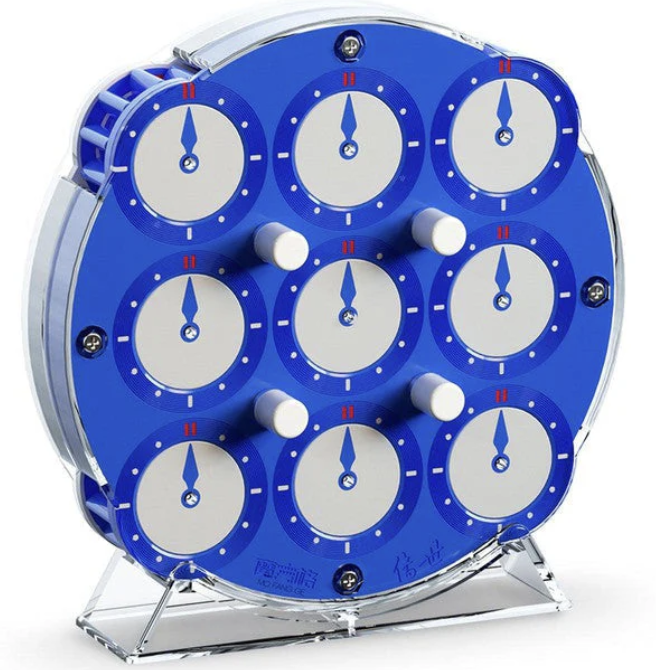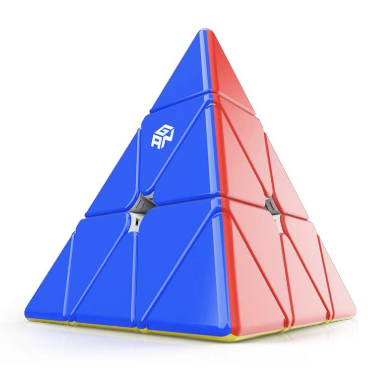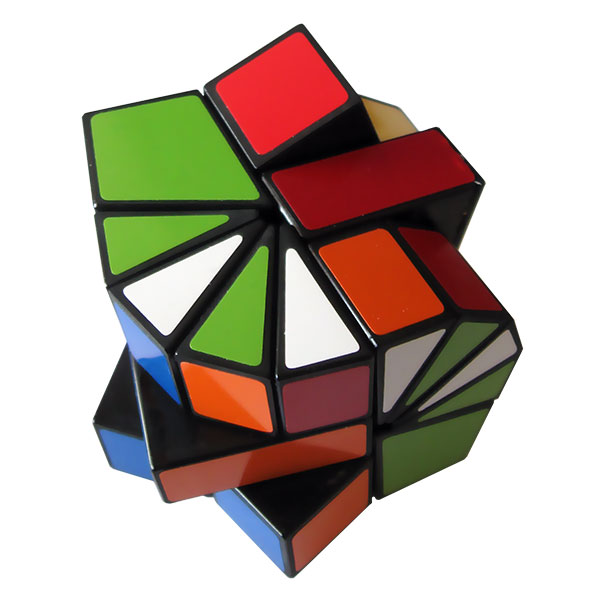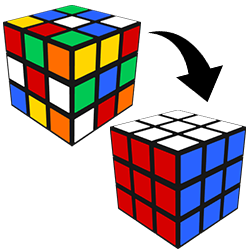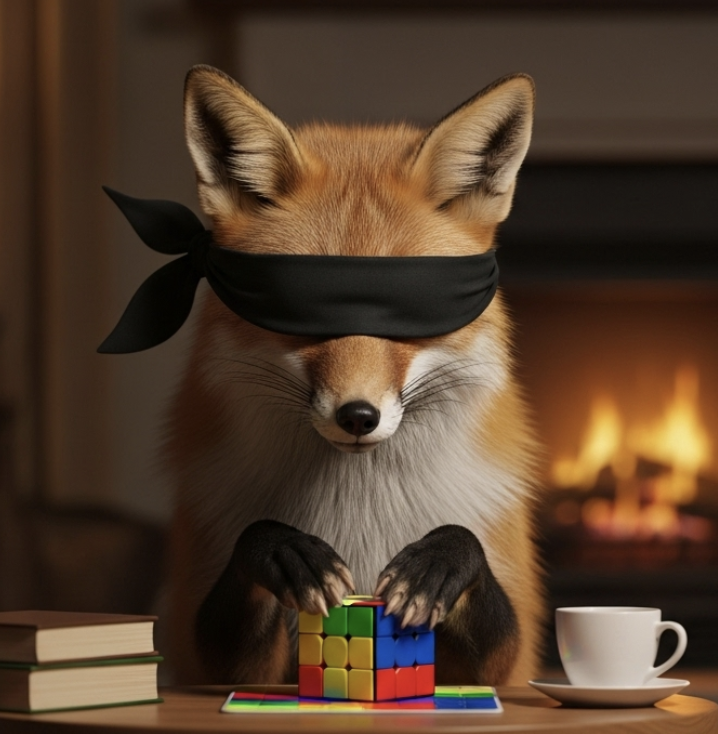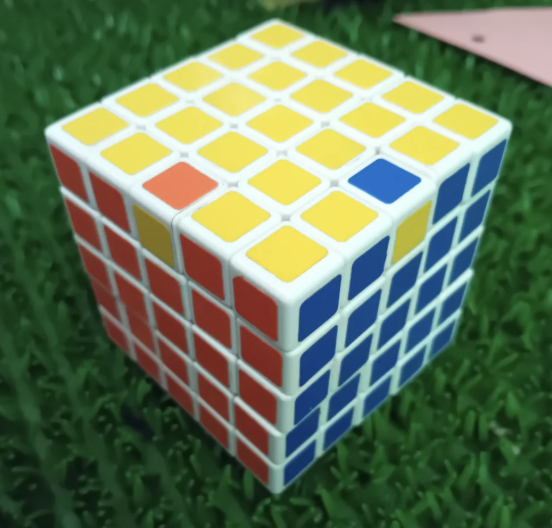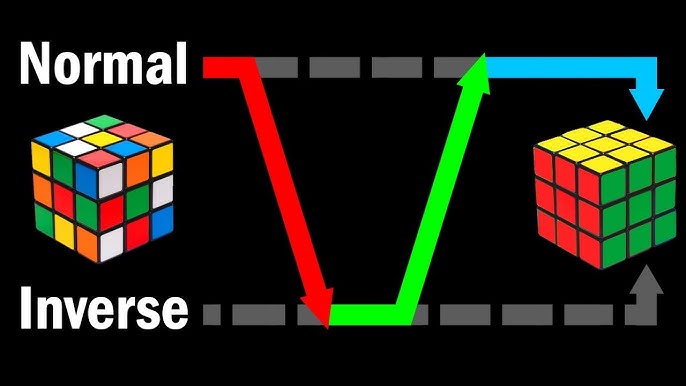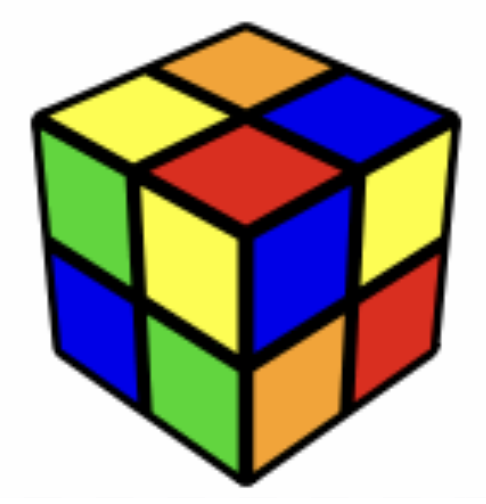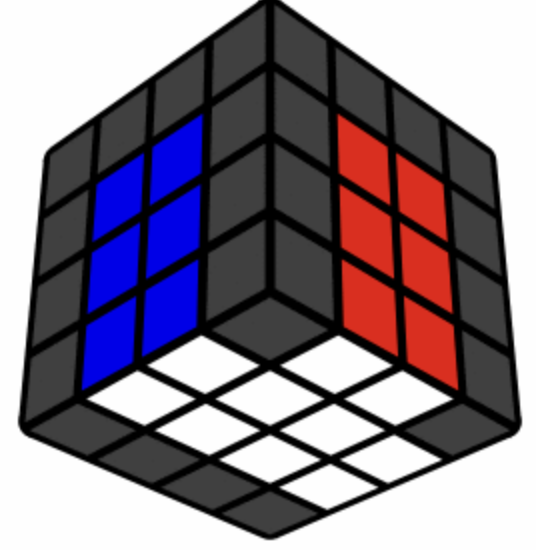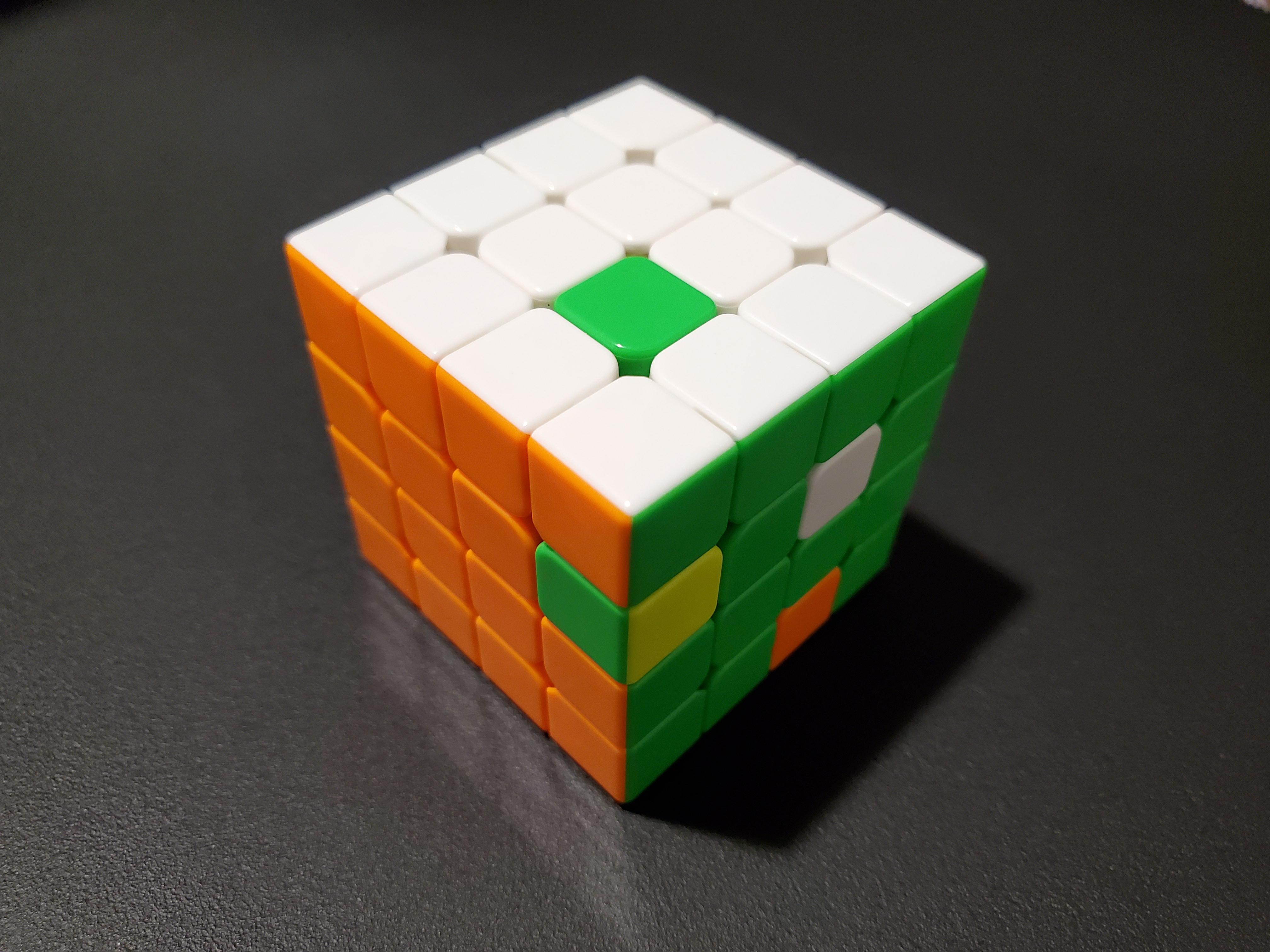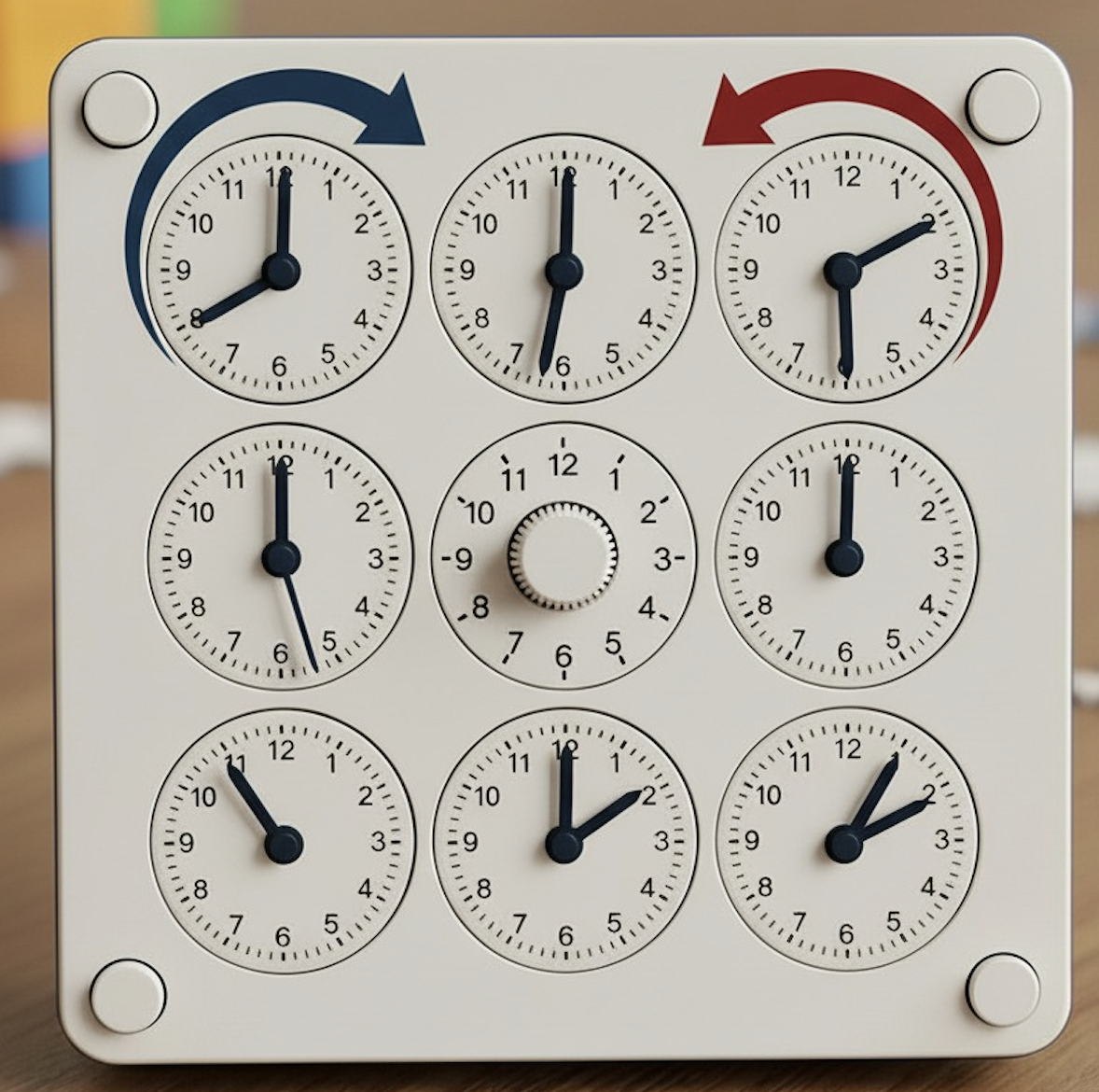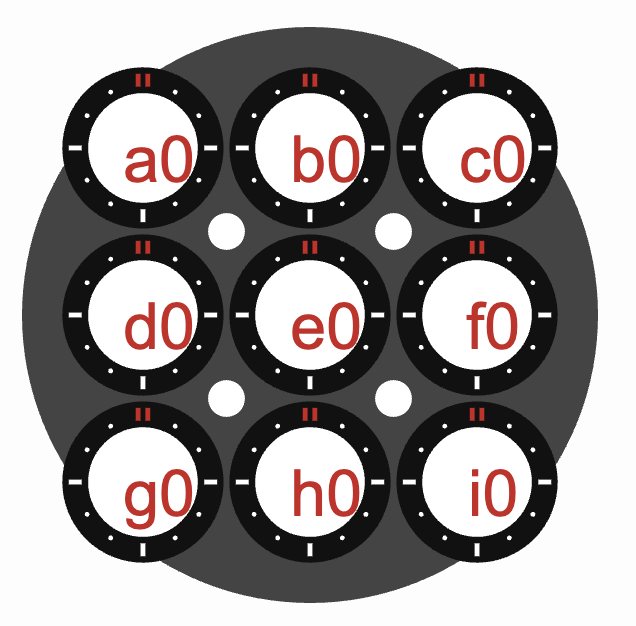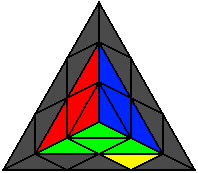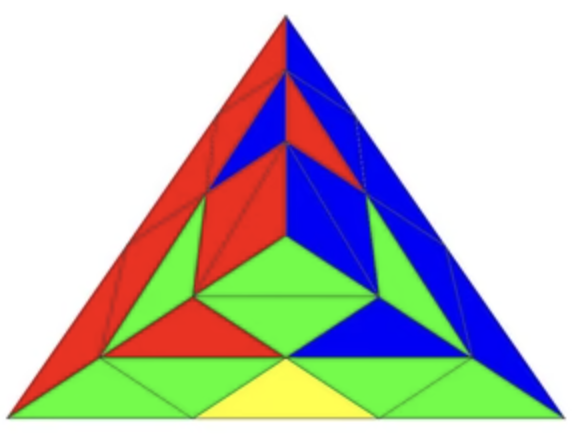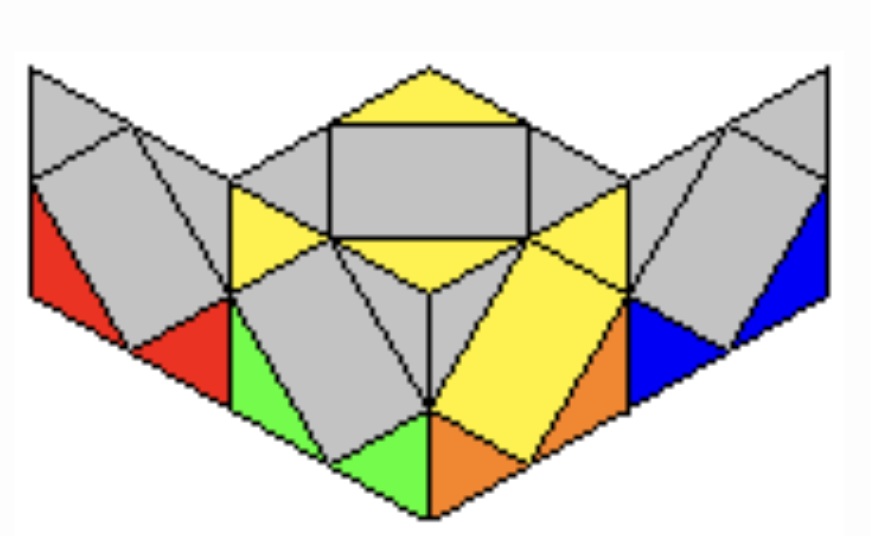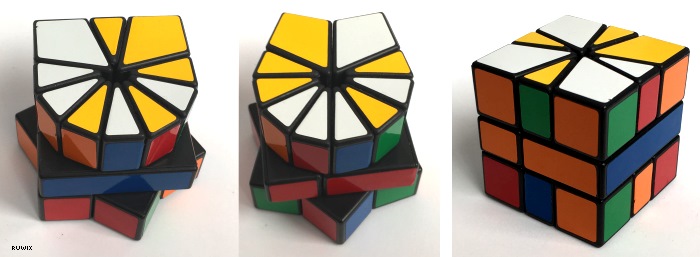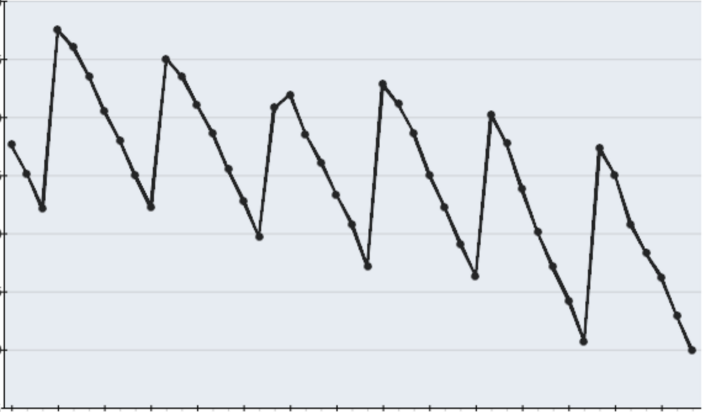cubingpro.com
4x4x4 BLD with U2 and r2
Introduction
We decompose solving a 4x4x4 blindfolded into the following steps:
- Memorize the corners
- Memorize the wings
- Memorize the centers
- Solve the centers
- Solve the wings
- Solve the corners
The execution order has to be center -> wing -> corner, because corners will influence both wing (only if parity is involved) and center, and wing will influence center.
You may choose to execute center -> corner (leave along the single letter) -> wing -> corner single letter and parity. But this step might be easy to forget. Consider using body gesture to remind yourself, e.g. lift up one feet to indicate corner parity.
The memo order is not critical and can be customized according to your preference.
But it's recommended to put corner memo into longer term memory since it's shorter.
And it's also helpful to let center memo and center execution be close.
There are two major blindfold methods, we introduce U2/r2/OP here. The alternative is 3-style.
Both methods share the same memorization, but differs in execution.
U2/r2/OP is relatively easier to learn. 3-style is conceptually easy but harder to ensure correctness and keep track
of the setup/reverse moves.
Prereqs
It's recommended that you already know how to solve a 3x3x3 blindfolded using M2/OP.
You should know how to handle small cycles by introducing a new cycle and deliberately end with the first piece of the cycle. For example, if your existing memo is BCDEF, new cycle is GHI, you should memo BCDEFGHIG.
Learning Path
To decompose the complex 4BLD task, you may practice with incremental difficulty.
This is just a reference, feel free to customize your learning path.
- Only scramble centers, write down center memo, execute correctly with visual; then execute correctly with blindfold
- Only scramble edges, write down edge memo, execute correctly with visual; then execute correctly with blindfold
- Scramble the cube, solve the corner, write down center memo and edge memo, execute correctly with blindfold
- Scramble only the corners, write down corner memo, execute correctly with blindfold
- Scramble the whole cube, write down all memo, execute correctly with blindfold
- Scramble the whole cube, memorize all of it, check memo is correct manually or with this website's tool
- Solve end to end
You may use cstimer and select 4x4x4 center only mode to assist.
To further reduce complexity and build up confidence, you may only scramble three centers and three edges and three corners e.g. To handle parity, change the numbers above to four.
Recording your own solve might also be helpful.
Center
We made the tutorial interactive, where you may specify your letter scheme for center/edge/corner.
Up |
|||
Left |
Front |
Right |
Back |
Down |
Memo
The memo is similar to that of 3BLD. You start from the buffer center (Ubl), and construct cycles. Append small cycles like the example in the prereqs section.
We group center memo into pairs of letters.
The last group could be a single group, called center parity.
Tips:
- When you see a top face sticker, instead of completing the cycle, just treat it as one of the unsolved top face sticker. This will lead to shorter memo.
- Develop the habit of treating a sticker as the first unsolved sticker on that face, it can help track whether all stickers on a face are memorized already.
Execution
The U2 method is similar to M2 method on 3BLD.
For each pair letter_1 and letter_2, we execute algorithm for letter_1, add U2, reverse; then algorithm for letter_2, add U2, reverse.
In case the last memo is a single letter, we execute algorithm for letter, U2, reverse, U2. For simplicity, you may equivalently append Ufr to your memo when it's odd.
Algorithms
Recall slice moves r = Rw R' and r' = Rw' R; l = Lw L' and l' = Lw' L.
The algorithms not marked as special could be understood intuitively and does not require brute force memorization, the motivation is to execute an algorithm to set up the piece with the memo letter to Ufr as the target position.
For example, to move Lbu to Ufr, you may use r u r'.
For algorithms marked as special, there is no need to apply U2 and the reverse, just directly apply the algorithm (U2 is already included as part of the algorithm, no extra U2 needed).
In case of single letter being the special algorithm, you need an additional U2.
If you see Ubr or Ufl in the second letter of a pair, do the algorithm for the other piece (Ufl algorithm for Ubr, and Ubr algorithm for Ufl). You may also make this swap during your memo but might lead to confusion.
Wing
Letter Schema for Wing
We made the tutorial interactive, where you may specify your letter scheme for center/edge/corner.
Up |
|||
Left |
Front |
Right |
Back |
Down |
Memo
Memo is similar to corner.
Start with the buffer piece FDr.
We group wing memo into pairs of letters.
The last group could be a single group, called wing parity.
Execution
The r2 method is similar to M2 method on 3BLD.
For each pair letter_1 and letter_2, we execute algorithm for letter_1, add r2, reverse; then algorithm for letter_2, add r2, reverse.
If the last memo is a single letter, we execute the parity algorithm r' U2 r U2 r' U2 x r U2 r U2 r U2 r2 U2 x' r' U2.
Algorithms
If you see UFr or BDr in the second letter of a pair, do the algorithm for the other piece (BDr algorithm for UFr, and UFr algorithm for BDr). You may also make this swap during your memo but might lead to confusion.
Corner
Solving the corner is identical to the 3BLD Old Pochmann method.
You should solve all pairs.
If there is a single letter at the end, you should execute its algorithm, then you will have two edges DB and DL remain swapped.
Swapping them is very straightforward: setup to 4x4x4 PLL parity case, apply the algorithm, and reverse the setup.
The algorithm is U2 R U R' U' (r2 U2 r2 Uw2 r2 Uw2) U' R U' R' U2.
Execution
We only show two examples just as a refresher for OP method. For the complete tutorial, search for any online material should be very straightforward.
Assume your memo are three letters, corresponding to <Ufl, Frd> <Dfl>
Here is the scramble, apply it with your regular BLD color scheme (do not use white top green front if that's not the one you use for BLD).
R2 U2 R2 F2 R2 F R2 F R2 F2 R' F L F L' F R' r2 U2 r2 Uw2 r2 Uw2 U2
The execution are:
- Solve for Ufl by setup, swap (this algorithm is a portion of the Y-perm PLL in case you find it difficult to memorize), reverse:
F R' SetupR U' R' U' R U R' F' R U R' U' R' F R SwapR F' ReverseYou may cancel moves into: F U' R' U' R U R' F' R U R' U' R' F R2 F'
- Solve for Frd
D R SetupR U' R' U' R U R' F' R U R' U' R' F R SwapR' D' ReverseYou may cancel moves into: D R2 U' R' U' R U R' F' R U R' U' R' F D'
- Solve for Dfl
F' SetupR U' R' U' R U R' F' R U R' U' R' F R SwapF Reverse
- Fix edge parity by U2 R U R' U' (r2 U2 r2 Uw2 r2 Uw2) U' R U' R' U2
